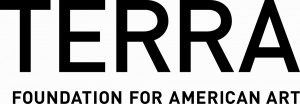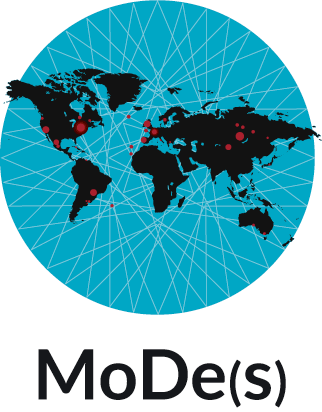The international conference Cold Atlantic was held from September 5th to 7th, 2016 at the Reina Sofía Museum in Madrid. Thank you very much to all the participants for making this encounter such a stimulating space of dialogue!
Through thematic presentations and case studies, reflections about methodology and the geopolitical contexts of the Cold War and their impact on cultural and political practices, the conference provided many lines of reflection to explore a complex period of contemporary history.
Here we would like to leave a brief summary of the issues that arose and were discussed during the three days of congress in Madrid.
Inaugurating the conference, Walter Mignolo‘s keynote, entitled “The Bandung’s Legacies at Large,” insisted on the necessity to reconsider the role of the non-aligned movement in the Cold War geopolitical frame, making however a distinction between the objectives of this movement, conceived as an alternative route to the communist/capitalist dual system, and those that were articulated at the Bandung conference (1955), putting racial, religious and anti-colonial issues at the center of the table. However, as Atreyee Gupta pointed in her response to the first discussion table “Networks, and ‘contact zones’ for a non-aligned geopolitical order”, beyond its mere historical and geopolitical definition, the idea of non-alignment offers a helpful conceptual framework to analyze socio-cultural phenomena that are not necessarily located in the orbit of the non-aligned countries, such as exhibitions or forms of transnational collaboration involving artists from different territories and continents. Directly related to the need to communicate and establish networks beyond the division into blocks and ideological systems, the notion of solidarity was a recurring theme over these days, as an element expressed through both state cultural policy and underground or dissidents individual or collective practices.
Modern art, and more particularly abstract art, was a central theme in the second panel “Competing hegemonies”, not only from the perspective of its instrumentalisation by the two dominant ideological systems’ cultural policies, but also through their contacts and frictions with socialist realism, socially committed art or indigenism. Calling for the creation of new imaginaries based on historical facts, Sarah Wilson‘s paper “Picasso in China: ** Writing the Opera, 2014” showed, in addition to the potential of fiction to reread historical episodes, the necessity to reconsider the relations between artistic production and socio-political context from a more global perspective. As such, it echoed one of the conference’s main objectives: to question the exclusive dimension of the North Atlantic axis and to expand it, opening to other geographies and socio-cultural and political realities, including the Pacific world. In her response, Julia Bailey highlighted the complexity of Abstract Expressionism as a cultural tool in the Cold War and the role of cultural diplomacy, taking the example of the Art Exhibition of the United States in Soviet Union in 1959.
The conference also emphasized the role played by biennials, international exhibitions or festivals on the one hand, and publications on the other, not only in the dissemination of hegemonic cultures and models, but also in their subversion through the articulation of discourses and aesthetics of resistance.
Focusing on specific individual or collective practices, the third panel discussion on “Resistance, Dissidence and Utopia(s)” discussed how, and in what ways, artistic praxis could offer models or options of resistance capable of transcending and breaking into the Cold War’s cultural order, proposing utopian and universalist visions beyond the operative models and canons, as well as territorial, urbanistic and hygienist attempts of systematization. The papers addressed the role of minorities – racial, sexual, or from geographic and cultural areas considered as marginal – and the issue of their relocation through new forms of committed historiography. Starting by denouncing women artists’ lack of visibility in Latin America, Andrea Giunta’s keynote “Decolonising the canon: artistic feminism in the Archives of Latin America, 1960-1990” showed their essential participation in the articulation of counter-hegemonic discourses of resistance under dictatorial regimes and patriarchal laws. Responding to this variety of cases and strategies, Jaime Vindel insisted on the necessity to give agency to these forms of resistance and connect them with the urgency of the present.
The fourth and final panel “Global order: Cold War and beyond” proposed to discuss the role of theoretical-critical production and contemporary art today, identifying and highlighting experiences and traces of the Cold War that still remain present, as well as their possible resonance with situations of conflict and division in the present. The issue of space that had already been raised throughout the conference was illuminated in Jonathan Harris‘ keynote “Global Contemporary Art and Legacies of the Cold War: South Korea’s ‘Real DMZ Project’, 2011-2013.” Looking at artistic production in North and South Korea, he examined the links between cultural and political aspects of the North-Atlantic world and other realities within the Asian context, with their proper manifestations of communism and globalization. As Paula Barreiro López pointed out in her response, the Cold War continues to shape our present global perception in current disciplinary experiences and structures, and for that reason it calls for new analysis and projections in an updated context.
Both the debates in each panel and the final roundtable moderated by Serge Guilbaut addressed the role and contributions of the discipline of art history in the articulation of stories that, from decolonial, feminist, decentralized perspectives, continue to question the conceptual, geographical, aesthetic and ideological corsets through which these artistic and cultural practices have been organized and interpreted; starting with the idea of a transatlantic axis as the backbone of cultural policies, artistic practices and critical discourses during the Cold War period.
The participants could attend guided tours of the exhibitions related to the conference in the Reina Sofia Museum, as well as the screening of a documentary about David Alfaro Siqueiros realized by Irene Herner.
All the lectures and debates could be followed in streaming; videos archives can be consulted here.
Read the Call for Papers
Access to the Full Program of the Conference
Photo gallery
List of participants
Keynote speakers: Andrea Giunta, Jonathan Harris, Walter Mignolo and Sarah Wilson.
Lectures:
Vardan Azatyan, Katarzyna Cytlak, Erina Duganne, George Flaherty, Jacopo Galimberti, María Gaztambide, Michele Greet, Kristian Handberg, Irene Herner, Jennifer Josten, Fabiola Martínez, Armin Medosch, Andrea Noble, Thy Phu, Bojana Piskur and Terry Smith.
Responses: Atreyee Gupta, Julia Bailey, Jaime Vindel and Paula Barreiro López.
Chairs: Jesús Carrillo, Olga Fernández López, Chema González, Serge Guilbaut and Mark Nash.
Organisation: Museo Reina Sofía, Saint Louis University Madrid, Universitat de Barcelona and Universidad Autónoma de Madrid,
This project was generously funded by the Terra Foundation for American Art.
Scientific Committee: Paula Barreiro López, Fabiola Martínez Rodríguez, Chema González, Carlos Prieto del Campo, Olga Fernández López, Juan Albarrán, Julia Bailey, Andrea Giunta, Serge Guilbaut, Jonathan Harris and Jesús Carrillo.
The conference was organized within the framework of the research project Decentralised Modernities: Art, Politics and Counterculture in the Transatlantic Axis during the Cold War (HAR2014-53834-P).


![]()



